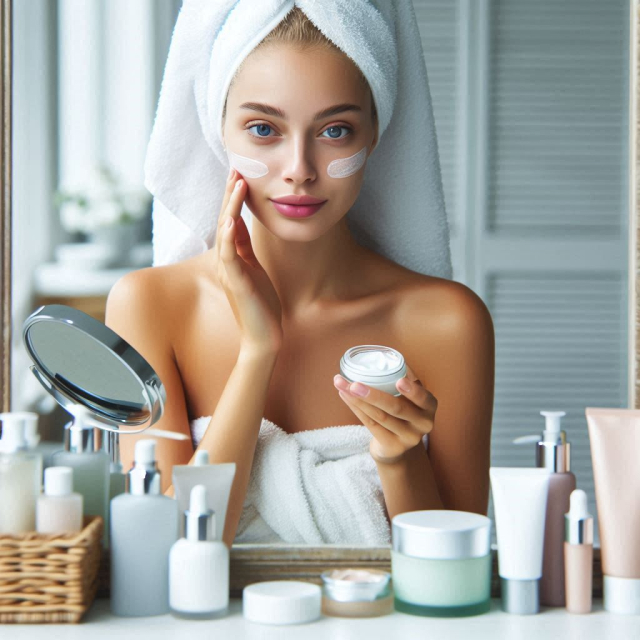In the constant quest for youthful and radiant skin, rejuvenating products have gained immense popularity in the personal care industry. From creams and serums to more advanced treatments, these products promise to reduce the signs of aging, improve skin texture and restore its vitality. This article explores in detail the different types of rejuvenating products available on the market, their key ingredients, how they work and how to select the most suitable one for your skin type.
What Are Rejuvenating Products?
Rejuvenating products are cosmetics designed to combat the effects of aging on the skin. These products typically target common problems such as wrinkles, fine lines, age spots, loss of firmness and elasticity, and dehydration. Rejuvenating products come in various forms, including creams, serums, masks, scrubs, and topical treatments.
Key Ingredients in Rejuvenating Products.
Retinol and Retinoids.
Retinol, a form of vitamin A, is widely recognized for its ability to stimulate collagen production and accelerate cell renewal. Retinoids, more powerful derivatives of retinol, are used in prescription products and offer faster results in reducing wrinkles and spots.
Hyaluronic acid.
This ingredient is known for its ability to retain large amounts of water, which helps keep skin hydrated and plump fine lines and wrinkles. Hyaluronic acid is a common component in serums and moisturizers.
Vitamin C.
A powerful antioxidant, vitamin C helps protect skin against environmental damage, brightens skin tone, and promotes collagen production. Vitamin C is common in serums and dark spot treatments.
Peptides.
Peptides are chains of amino acids that help build proteins in the skin, such as collagen and elastin. These ingredients can improve the firmness and elasticity of the skin, reducing the appearance of wrinkles.
Alpha Hydroxy Acids (AHA) and Beta Hydroxy Acids (BHA).
AHAs, such as glycolic and lactic acid, exfoliate the skin's surface, promoting faster cell renewal. BHAs, like salicylic acid, penetrate deeper into pores to fight acne and improve skin texture.
Types of Rejuvenating Products.
Anti-aging creams.
These creams are formulated with a combination of moisturizing and anti-wrinkle ingredients that help improve the overall appearance of the skin. They are ideal for daily use and usually contain SPF to protect against sun damage.
Rejuvenating Serums.
Serums are concentrated formulas that absorb quickly into the skin. They usually contain high levels of active ingredients such as vitamin C, hyaluronic acid and retinol, offering visible results in less time.
Facial Masks.
Rejuvenating facial masks offer an intensive treatment that may include ingredients such as clay, charcoal, plant extracts and vitamins. They are usually used weekly to give the skin an extra boost.
Chemical Exfoliants.
Chemical exfoliants use AHAs and BHAs to remove dead skin cells, revealing smoother, more radiant skin. They can improve skin texture and reduce the appearance of wrinkles and blemishes.
Specific Treatments.
They include products such as eye patches, neck and décolleté serums, and hand treatments. These products target specific areas of the body that may show signs of aging.
How to Choose the Right Rejuvenating Product.
Choosing the right rejuvenating product depends on several factors, including your skin type, specific concerns, and personal preferences. Here are some tips to help you make an informed decision:
Identify your Skin Type.
Knowing your skin type (dry, combination, oily or sensitive) is crucial to selecting a product that works well for you. Dry skin may benefit from products with hydrating ingredients like hyaluronic acid, while oily skin may prefer lightweight, non-comedogenic formulas.
Consider your Specific Concerns.
If your main concern is wrinkles, look for products that contain retinol or peptides. For dark spots, products with vitamin C and AHA may be more effective. If you are dealing with loss of firmness, products with collagen and elastin are a good option.
Check the Concentration of Active Ingredients.
Rejuvenating products can vary in the concentration of their active ingredients. Be sure to read labels and look for products that contain effective levels of key ingredients to get the best results.
Test and Adjust.
You may need to try several products before you find the one that works best for you. Gradually introduce new products into your skincare routine and see how your skin reacts. If you experience irritation or adverse effects, adjust your routine accordingly.
Trends and Advances in Rejuvenating Products.
Biotechnology and Natural Ingredients.
Biotechnology is allowing the creation of more effective and specific ingredients for skin care. Rejuvenating products are beginning to incorporate biotechnological ingredients derived from plants and algae, which offer anti-aging benefits without the side effects of some synthetic ingredients.
Personalization.
Personalization in skin care is on the rise. Brands are developing products that can be personalized according to the user's genetic profile, skin type and individual needs. This trend promises more effective and personalized products.
Sustainability.
With growing environmental awareness, many brands are adopting sustainable practices in the manufacturing and packaging of rejuvenating products. This includes the use of organic ingredients, recyclable packaging and reducing the carbon footprint in the production process.
Rejuvenating products play a crucial role in maintaining youthful and healthy skin. With a wide variety of options available, from creams and serums to targeted treatments and masks, it is possible to find the right product for your individual needs. The key to maximizing the benefits of these products lies in choosing those that contain effective active ingredients and are tailored to your specific skin type and concerns. Additionally, staying up to date with trends and advancements in the industry can help you make informed decisions and optimize your skin care routine.
